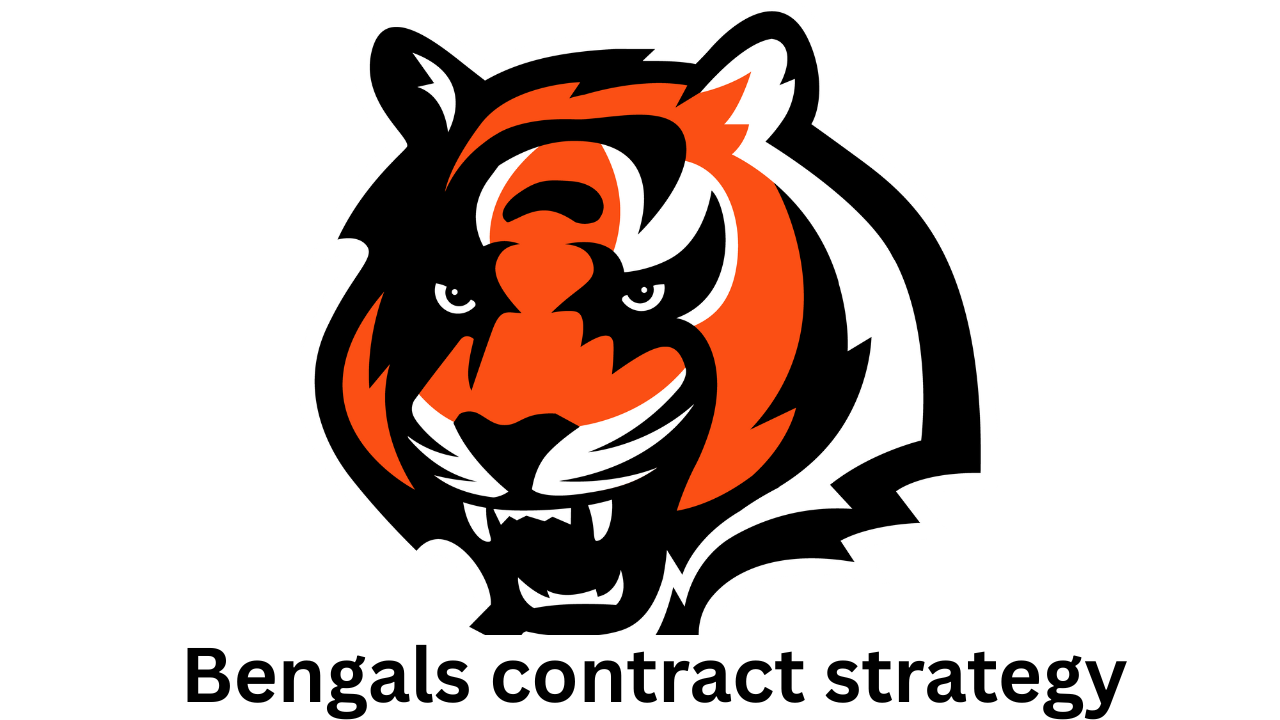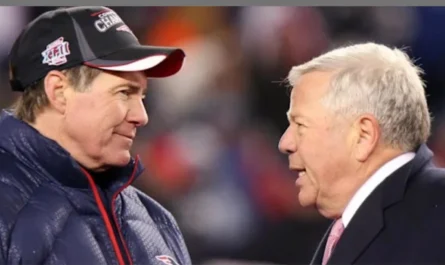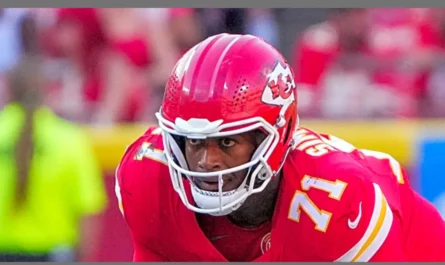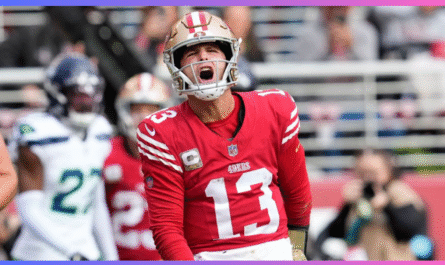The silence from Cincinnati’s front office speaks volumes. With training camp well underway, the situation surrounding Pro Bowl pass rusher Trey Hendrickson and the Bengals has shifted from a simmering contract dispute to a full-blown impasse. The team is reportedly listening to trade offers for one of its most dominant defensive players, a shocking development that has sent ripples of concern through the Bengals fanbase. This isn’t just about one player’s salary; it’s a critical moment that will define the team’s financial future. The question on everyone’s mind is simple: Is this the first major crack in the carefully constructed Bengals contract strategy?
The Standoff’s Genesis: A Clash of Performance and Philosophy
Trey Hendrickson has been nothing short of a revelation since joining the Bengals. He’s been the engine of their pass rush, a relentless force who has consistently led the team in sacks and pressures. His performance on the field has earned him a place among the NFL’s elite edge rushers, and he is rightfully seeking a contract that reflects that status. He’s not asking to be the highest-paid player in the league, but he does want to be paid in line with his peers, and more importantly, he’s seeking long-term security with significant guaranteed money. This is where the conflict arises.
The Bengals’ front office, led by the ownership, has a long-standing, well-defined Bengals contract strategy. Their philosophy is often described as “pay as you go.” They are more than willing to pay top dollar on an annual basis but have historically been hesitant to guarantee money well into the future, particularly for players on the wrong side of 30. This approach has allowed them to maintain financial flexibility and avoid being crippled by large, dead-money cap hits if a player’s performance declines due to age or injury. For years, this Bengals contract strategy has served the team well, allowing them to rebuild and acquire key pieces without sacrificing future stability.
The issue isn’t that the Bengals don’t value Hendrickson; they do. The problem is that the structure of the deal he’s seeking clashes directly with the franchise’s deep-rooted financial philosophy. While they may be willing to offer a high annual salary, they are unwilling to meet his demands for multi-year guarantees. In a league where elite pass rushers are a premium commodity, the market has dictated that players receive more security. This fundamental disagreement on the principles of the deal is what has brought the two sides to an impasse, forcing the team to explore the possibility of a trade. This situation is a significant test for the team’s entire Bengals contract strategy.
The Financial Domino Effect: Weighing the Risk
The situation with Hendrickson is particularly precarious because of the other contracts already on the books. In the past few seasons, the Bengals have committed colossal sums of money to their offensive stars, a wise investment that has established them as a perennial Super Bowl contender. Joe Burrow’s landmark extension, Ja’Marr Chase’s well-deserved new deal, and Tee Higgins’ lucrative contract all demonstrate the team’s willingness to spend. These contracts are the cornerstones of the team’s current financial reality. But here is the thing: securing those deals was part of the Bengals contract strategy, a clear plan to build an offense that can compete with anyone.
Hendrickson’s contract is the next major piece of the puzzle. If they can’t find a middle ground, it could set a precedent that every future contract negotiation will be a drawn-out battle. It also means they may have to trade a premier player they invested in and developed. A trade would free up significant cap space—around $16 million—but it would also leave a massive void in their defense. Finding a replacement for Hendrickson’s production is not easy and may require another significant investment in free agency or a high draft pick, neither of which is a guaranteed solution. This is a tough spot for the front office, and it’s all a consequence of their specific Bengals contract strategy coming up against the modern NFL player market.
The challenge is balancing the need to retain a high-performing player with the broader financial health of the organization. The Bengals contract strategy has always prioritized long-term sustainability, but are they being too rigid at a time when they have a genuine chance at a Super Bowl title? The ripple effect of this decision could be felt for years to come. Does the Bengals contract strategy need to be more flexible?
A Deeper Look at the Bengals’ Contract Strategy
To fully understand the current situation, it’s essential to look at the historical context of the Bengals contract strategy. For a long time, the franchise was known for being one of the most fiscally conservative in the NFL. They rarely dabbled in big-money free agency and often let key players walk rather than risk a bad contract. While this approach was sometimes criticized, it also meant the team was never in a position where a bad deal could completely derail their future.
In recent years, with a generational talent like Joe Burrow at quarterback, their approach has evolved. They’ve spent big on their offensive core, which was a necessary evolution of the Bengals contract strategy. However, the fundamental principle of minimizing long-term guaranteed money remains intact. This is the core of their bargaining position with Hendrickson. They are effectively saying, “We’ll pay you, but we won’t give you the same multi-year guarantees that other teams might.”
For Hendrickson, who is entering his 30s, this is a significant point of contention. His next contract will likely be his last big one, and he wants the financial security that comes with it. The team’s Bengals contract strategy prevents them from meeting those demands, creating a deadlock. It is a calculated risk for the Bengals. They are betting that their stable financial position is more valuable than bending their philosophy for one player, no matter how talented. But what if this conservative Bengals contract strategy costs them a crucial piece of a championship-caliber roster?
The “Joe Burrow Prime” Imperative: A Ticking Clock
The real stakes in this standoff are tied to the team’s quarterback. Joe Burrow is in the prime of his career, and the Bengals’ championship window is wide open. For any team to win a Super Bowl, they need a dominant pass rush to get after the opposing quarterback. Hendrickson is the cornerstone of that pass rush. Losing him, whether to a trade or a disgruntled holdout, would significantly weaken the defense. This would put more pressure on an already-loaded offense and a quarterback who has battled injuries. A strong defense, anchored by a player like Hendrickson, is essential for keeping Burrow upright and healthy for the long haul.

The irony is that the same Bengals contract strategy that has allowed the team to build a powerful offense around Burrow may now be a hindrance to keeping a championship-level defense around him. The team’s careful management of the salary cap, a core part of the Bengals contract strategy, has allowed them to afford Burrow’s massive deal. But what’s the point of a franchise quarterback with no time to throw or a defense that can’t get a stop when it counts? The two are inextricably linked. This isn’t just a financial decision; it’s a football decision with potentially massive implications for the team’s short-term success. The clock is ticking on their chance to capitalize on Burrow’s prime, and the Hendrickson situation is a critical factor.
Potential Outcomes: Trade or Resolution?
So what happens now? There are two main paths forward.
- A Trade: The Bengals are listening to offers, which suggests they are serious about this possibility. If a trade happens, they will likely seek a premium draft pick in return, perhaps a first-round selection. A trade would free up cap space and provide a long-term asset, which aligns with their Bengals contract strategy of building through the draft. But it also means they would be without their top pass rusher for a season with Super Bowl aspirations. The list of interested teams would likely include contenders with cap space and a need for a dominant edge rusher, like the Lions or Chargers. While it would provide a clean break and future assets, it would weaken the team immediately.
- A Last-Minute Deal: There is still a chance that a deal gets done. Both sides could make a concession to end the stalemate. Hendrickson could accept less guaranteed money than he wants, or the Bengals could break from their traditional Bengals contract strategy and offer a deal with a little more security. The fact that he returned to practice in a “hold-in” capacity (attending meetings but not practicing) shows he wants to be with the team but is also serious about the contract. This move, a subtle form of protest, puts more public pressure on the Bengals’ front office to adjust their Bengals contract strategy. It’s a gamble for both sides.
The Verdict: A Test of Philosophy
In the end, this contract impasse is a fascinating case study in the modern NFL. It pits a proven, successful Bengals contract strategy against the evolving market for elite talent. Is it time for the Bengals to adapt their philosophy, or should they stick to the principles that have brought them so far? The team has shown a newfound willingness to be aggressive in free agency and with big extensions, a subtle but significant shift in the Bengals contract strategy. But the situation with Hendrickson shows there is still a line they are unwilling to cross.
The outcome of this situation will reveal a great deal about the Bengals’ future and the true nature of their financial plan. Will the Bengals contract strategy prove to be their ultimate strength, or will it be the one thing that holds them back from a championship? Only time will tell, but for now, the future of their pass rush hangs in the balance, and the first major test of the new Bengals contract strategy has arrived. It is a pivotal moment for the franchise, a crossroads where the team’s long-term Bengals contract strategy must prove it can both build and sustain a winner. This is a defining moment, and the choices made here will have a lasting impact on the team for years to come.



